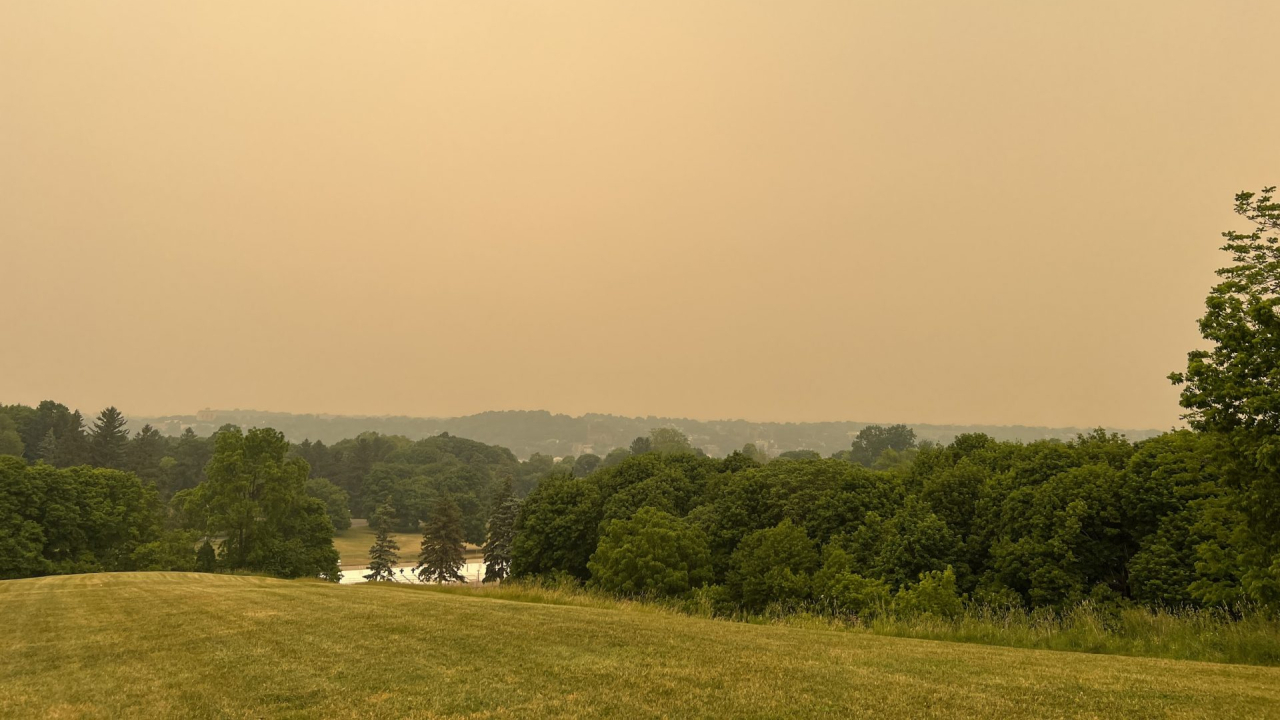
NEW YORK, N.Y. (NCC News) – Hazy skis could return to New York state early this week as a result of the ongoing Canadian wildfires. New York City Mayor Eric Adams said in a statement on Sunday that New Yorkers should expect an increase in air pollution starting Monday morning, with air quality expected to reach a moderate Air Quality Index level of 55.
AQI readings should not go much higher than that in the city Monday, but the air quality in other cities, like Detroit, MI, has already reached “orange” levels, which means “members of sensitive groups may experience health effects,” according to the U.S. AQI Index.
Mayor Adams implored city goers to “listen to their bodies, especially if they have any preexisting health conditions and take any necessary precautions to ensure they stay safe,” in his statement on Sunday. New York City Department of Health and Mental Hygiene (DOHMH) Commissioner, Dr. Ashwin Vasan, echoed the Mayor’s sentiment, while adding that anyone experiencing side effects, such as teary eyes or a scratchy throat, should try and remain indoors.
No health advisories have been issued as of Monday morning.
While officials are still actively monitoring the potential effects of the incoming smoke, this surge is not expected to be nearly as bad as the one that hit the state earlier this year. In June, New York City saw the AQI reach historical levels in the 400s, which is considered “hazardous.”
Levels spiked once again in July, but their effects were much less severe. In response to the record-high pollution, the city distributed millions of N95 masks to its residents.
Central New York is not experiencing any severe consequences as a result of the billowing smoke. As of 11 A.M Monday morning, Syracuse’s AQI is still in the “green” and “air pollution poses little or no risk” to the public. However, a little further west, Buffalo is in the yellow zone with levels up near 60.
The continuation of these fires has been to the surprise of many Canadian officials. Canadian fire activity tends to decline this time of year, but from September 23-25th, over 50 megatons of carbon was released.
Since May 2023, over 70,000 square miles of Canadian land has burned. The fires are not expected to stop until there is “deep snow,” according to American ecologist and University of Colorado professor, Merritt Turestsky.
Some officials have surmised that climate change has played a role in this remarkable wildfire season. High pressure areas – also known as “heat domes” – have dried out the land and turned forests into kindling.




